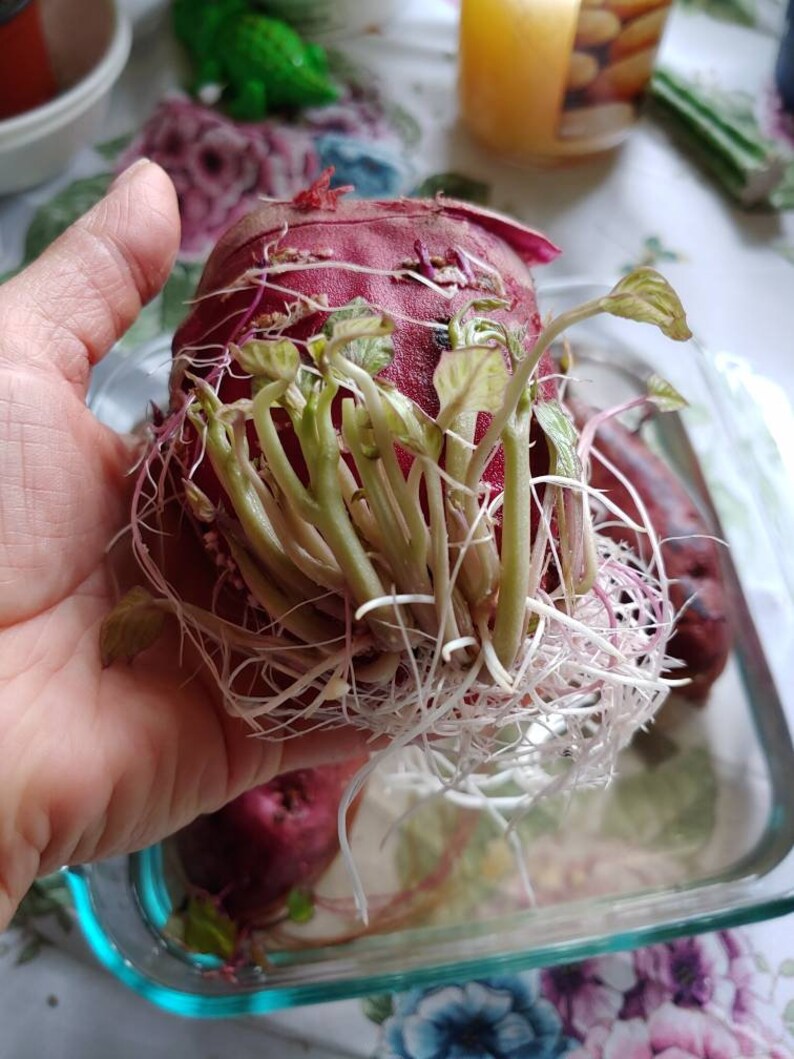

MURASAKI SWEET POTATOES HOW TO
To learn more about the "Safe Seed Pledge" please visit Learning Download: How to Grow Sweet Potatoes

Further, we wish to support agricultural progress that leads to healthier soils, to genetically diverse agricultural ecosystems, and ultimately to healthy people and communities. More research and testing is necessary to further assess the potential risks of genetically engineered seeds. We feel that genetically engineered varieties have been insufficiently tested prior to public release. The mechanical transfer of genetic material outside of natural reproductive methods and between genera, families or kingdoms, poses great biological risks as well as economic, political, and cultural threats. For the benefit of all farmers, gardeners and consumers who want an alternative, we pledge that we do not knowingly buy or sell genetically engineered seeds or plants. We must protect this foundation as a safe and genetically stable source for future generations. "Agriculture and seeds" provide the basis upon which our lives depend. Avoid using a hoe so you don’t disrupt the feeder roots. The variety is a versatile culinary ingredient that can be baked whole, peeled and roasted.
MURASAKI SWEET POTATOES SKIN
Tips: To avoid vines over growing, gently weed the vines two weeks after you’ve planted the slips. Attractive reddish-purple skin with a pure white interior, the Japanese Murasaki has a sweet, nutty flavor and slightly dry texture. Keep reading to learn more about the health benefits of the Japanese Sweet Potato. If harvesting too roughly, the sweet potato skin will bruise. Satsuma-imo, Japanese sweet potato, is a sweeter, red or purple-skinned, yellow-fleshed option packed with vitamins, minerals, and antioxidants. Harvesting: The tubers will grow close to the surface, so dig gently when harvesting. Watering: Water your sweet potato plants weekly since a regular watering schedule will help prevent the sweet potato skin from splitting.įertilizer: Add fertilizer containing potassium approximately two weeks after planting the slips.ĭays to Maturity: Tubers are ready to harvest when the plant’s foliage turns from green to yellow. Since sweet potatoes like it warm, plant the transplants in raised rows, which are usually about 8 inches higher than ground level. When the shoots are old enough, transplant them outside. Planting: Shoots should be between 4 and 8 inches tall before they’re transplanted outside. Keep the slips moist and warm, and shoots should sprout within a few days. To obtain a sweet potato slip, cut a sweet potato in half lengthwise and bury each half in damp potting soil. Sweet potatoes may appear similar to regular potatoes, but unlike regular potatoes which grow best in a cooler environment, sweet potatoes do better in the heat.īefore Planting: For those living in warm climates, plant sweet potatoes a month after the last spring frost, as soon as the temperatures outside and the soil temperatures have warmed up considerably. Learning Download: How to Grow Sweet Potatoes


 0 kommentar(er)
0 kommentar(er)
